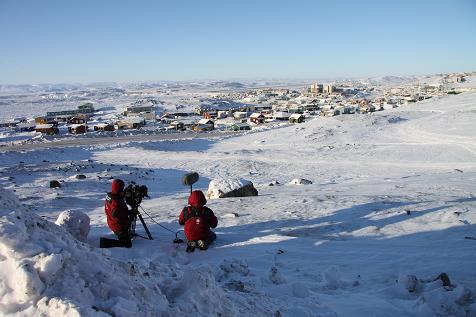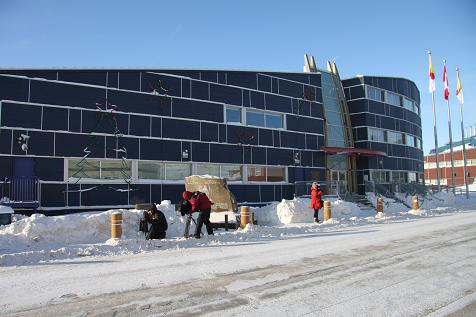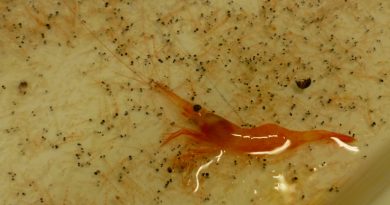The City of Many Fish
We’re in Iqaluit
 We’re finally in Iqaluit, located near the mouth of the Sylvia Grinnell River that empties into the Frobisher Bay, named after the famous 16th century English explorer Martin Frobisher.
We’re finally in Iqaluit, located near the mouth of the Sylvia Grinnell River that empties into the Frobisher Bay, named after the famous 16th century English explorer Martin Frobisher.
Iqaluit translates from Inuktitut as the “place of many fish.”
The Inuit have hunted, fished and traded in this area for centuries, but in its modern incarnation the town was founded in 1942 as an American Air Force base.
It was originally called Frobisher Bay but in 1987 the settlement was renamed Iqaluit. In 1995, Iqaluit was designated as the future capital of Canada’s newest territory, Nunavut, which came into existence on April 1, 1999.
We arrived in Iqaluit as the G-7 ministerial meeting had just wrapped up, leaving this normally quite town of about 8,000 residents a bit dazed and shell-shocked from all the international attention.
Eight thousand souls might not sound like much in the rest of Canada, but for Canada’s north this is explosive growth. Our cameraman, Luc Robida, told me that the Nova Inn hotel we’re staying at wasn’t there two years ago.
Across the street from the hotel stands the brand new legislative building and a new bank building is almost ready on the opposite corner.

Except for the taxis – $6 for a ride anywhere in town – everything else seems to be two or three times more expensive than down in the south. Everything has to be flown or shipped here.
A quick trip to the supermarket to buy stock for sandwiches, some coffee and tea cost me $95. I paid $8 just for a loaf of bread that would cost $3 in Montreal.
So it’s not surprising that many families even in Iqaluit, a small but modern city by most standards, have to complement their diet with what they call “country food,” seal and caribou meat or whatever else they can hunt or fish.
Correction: This blog is by Levon Sevunts, not Khady Beye as was previously bylined.



